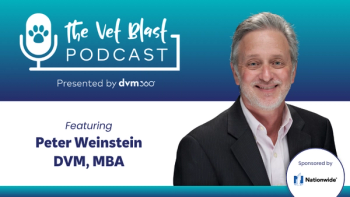
Enrichment Factors Veterinarians Should Use With Captive Birds
M. Scott Echols, DVM, ABVP, owner of Echols Veterinary Services, discusses the three key enrichment factors that veterinarians should use with captive birds.
M. Scott Echols, DVM, ABVP, owner of Echols Veterinary Services, discusses the three key enrichment factors that veterinarians should use with captive birds.
Interview Transcript (slightly modified for readability)
“There are several types of enrichment that we use with captive animals, not just birds; these enrichment factors will apply to many animals. The first, and probably most effective form of enrichment, is social enrichment. What I mean by that is interacting with the animal, whether that means the owner interacting with the animal or other animals in that household being able to interact with the animal. That could be cage mates, it could be other species who are outside the cage, it could be time outside the cage where they could interact together on, say, a perch or a play area or something like that. Social enrichment also comes with the most variables, including bites and wounds and other behaviors that may be unwanted. However, social enrichment is what we consider the most effective form of enrichment.
The second one would be foraging enrichment, [which] is something that I’ve worked on for a number of years and have encouraged, and we’re now seeing it [used] in all types of animals, whether that’s cats and dogs, rodents, birds, etc. Foraging enrichment is the idea that we provide a means that [makes] animals have to work for their food, as opposed to [going] to the food bowl. So, they’re no longer going to that food trough [because] they actually [have] to work for their food. What we understand of many animal studies, especially [regarding] parrots, is that a good part of the waking time animals spend is looking for food. So, they’re actually out there hunting for food, whether that’s a nut or another animal, they’re hunting and looking for food items and that’s something that’s a very productive use of their time. If you look at what they do in captivity, they mostly spend time sitting on a perch, they waddle over to the food bowl, and then come back and sit there and do nothing. We really want [them] to use that time doing something productive and foraging is a great form of enrichment.
The third one, I would probably say would be environmental enrichment; these are things that are going to be in the environment. That’s the structure of the cage design or the play area. This is the physical space that the animal lives in. Obviously a constrained space, a small cage or some type of containment system, is going to limit that animal from doing its species-typical behavior. [Birds] can’t stretch and fly in a small box, [they’ve] got to be able to move around. We want them to have structures that they can climb on, move around on, chew on, that are safe items [or] toys they can play with and so forth.”
Newsletter
From exam room tips to practice management insights, get trusted veterinary news delivered straight to your inbox—subscribe to dvm360.



